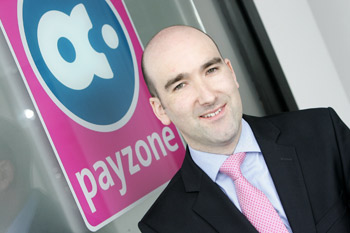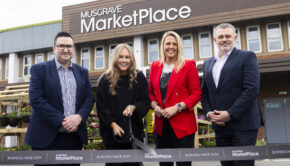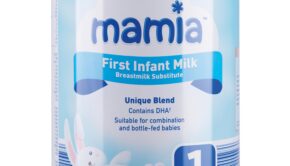Getting in the zone

Fionnuala Carolan caught up with Barry Keegan, sales director of Payzone, to hear more about the many new services coming down the line in the highly competitive payments services business
11 May 2012
Payment services is a multi-million euro business in Ireland and according to Barry Keegan, sales director, Payzone is currently the largest operator in this space, with approximately 1,500 agents, offering a range of services to the retail sector including mobile top-up, tolling payments, electronic gift cards and transport ticketing. The company was established in Ireland in the late 1980s as a telecoms business called Independent Telecoms and later known as Alphyra. In 2007 the company was rebranded as Payzone when it merged with the UK cash machines operator, Cashzone. Payzone also operates in the UK, Germany, Sweden, Greece and Romania.
There are two sides to the business today; Payzone, the electronic payments business and Cashzone, the ATM division, which deploys ATMs into the retail estate throughout the UK and Germany.
Barry Keegan has worked his way up through the business, starting off as a sales rep on the road shortly after leaving college. He is now sales director and based in the company’s headquarters in Sandyford Dublin where there are 110 staff.
Keegan explains that while the mobile phone top-up business was once the cash cow of the business, this has declined quite sharply in recent years. Worth over a billion euro at the height of the boom, it now stands at around EUR*800 million due to a decline in spend.
“The average top up continues to drop because the operators are offering better value. Handset subscribers are actually quite flat but with €20 top-up, you get free calls, and there are free texts from the Internet. New brand 48 is offering free calls and texts for €10 a month. So unfortunately that business is impacting retailers as well.”
Back in 2007, management recognised that the top-up market was waning and that it would continue to slide but that it still represented a large proportion of transactions in-store. Today 70% of transactions are still done in a retail environment so it is still a very significant product.
Keegan says that as a result of that decline the company decided to look at the other services it could offer while using the in-store technology and diversify into new markets to ensure it was not solely dependent on the mobile top-up market. “We’re very innovative in the Irish market. Retail is so advanced in Ireland; there is such engagement from retailers and they welcome new products.”
Exclusiveness
The company will only award a Payzone terminal to one retailer in every area so as not to deplete the transactions going through each agent. Keegan believes the real value is in the exclusiveness of the service and having something that your direct competitor won’t have.
“We map it on population size. In 2008 we identified agents within towns from the Census figures for that year. In more recent times, with stores closing down, we have to maintain that level of service out there so if a store does close down then we will approach the closest retailer.”
Payzone operates in a very competitive market. At one stage there were 8/9 distributors in this space and although this has declined the most notable competitor is Postpoint, a subsidiary of An Post. However Keegan believes that Payzone’s range of products sets them aside from the competition.
Newest venture – money transfer
Payzone is launching a money transfer service in association with Western Union this month. While there have previously been money transfer services available in retail outlets, they were not very successful due to the time it took for transactions to be completed.
“The money transfer market is estimated at over a billion euro so we’ve identified this as a massive opportunity for the retail estate,” says Keegan. “The key issue is the convenience and the speed of transaction. The Post Office is the key destination at the moment but we are bringing that to the next stage. We are bringing the transaction time down from 20 minutes to two minutes.”
To use this service the customer will sign up for a card that will hold all their details and the retailer will swipe the card through the technology. While a retailer used to have to do such transactions from the back office it can now be completed at the till which removes the time delay for the customer.
“We have identified Western Union as a partner because they are such a strong brand. It’s in one of the top five brands worldwide and they have locations all over the world.
“With emigration rising sharply over the last few years, there are a lot of Irish people abroad that are now sending cash home from America and Australia. It’s actually a very quick and easy way to do that.”
It would seem that retailers hoping to offer this service would have to keep large amounts of cash on site, but Keegan says that money leaving the country accounts for 95% of the transactions, therefore payouts are typically small. “The average transaction is EUR*300 and if the retailer does not have the cash available, the customer may wish to return to the store at a later stage or contact Western Union who in turn will advise of a specific location to complete the transaction.”
Leap card
A great success story for Payzone over the past year was the introduction of the Leap card as a means of paying for public transport, which has just recently passed the two million transaction mark. Using a Leap card makes travel up to 19% cheaper than purchasing single tickets from ticket machines. More private operators are now signing up to the service with the likes of Wexford Bus already on the system. It is believed that this will eventually be expanded nationwide.
The Leap card was the first contactless card in the Irish market but it is fast changing with Visa Debit rolling out at the moment. According to Keegan, we will see Laser cards fall out of the market and be replaced by Visa Debit in the not too distant future. Mastercard is also bringing out a contactless payment card. Customers can just tap these cards on a reader in-store to pay for transactions. At the moment, contactless cards can be used to pay for items up to the value of EUR*15 but eventually it is thought that we will become a completely cashless society.
Metering and pre-paid cards
An unlikely but quite lucrative element to the business now is pre-paid metering for gas and electricity and pre-paid debit cards like O2 money, Swirl Card and Ruby Card. Keegan sees the rise in pre-paid metering and cards as a sign of the times. “These cards are used by people who can’t get credit cards for credit reasons, and then there are people who don’t want to use their credit card online for security reasons. They are very popular. It probably represents 8% of transactions.”
Payment services companies need to keep innovating and not every idea is going to work. Keegan readily admits that there were a number of initiatives over the years that didn’t work. One of these was catalogue sales where a customer would buy an item in store from a catalogue and it would get delivered to their house. Another was a loyalty club for mobile top-up called Top-Up Club. Keegan says that they put a massive investment into it at the time and took on a lot of staff to run this side of the business. The whole idea was to counteract mobile top-up transactions that were going to other channels like online or ATM. When a customer topped up their mobile in a retail environment, they’d swipe their loyalty card and redeem points. They found that at the time Irish people were reluctant to sign up for things too easily. However he believes it’s a great concept and might work again.
Challenges in the market
It’s no secret that the retail space is very challenging at the moment and many stores have closed their doors due to the high cost of rents, rates and wages. Keegan says that there is also an awful challenge from online purchasing which affects this business.
And then there is the thorny issue of diminished margins that retailers have had to deal with in recent years. Keegan says that due to volumes declining, margins have had to decline in line with that.
He explains that a lot of the group’s products are low margin based but are footfall drivers. “What we have tried to do is increase the basket margin of our services and you’ll see that through Western Union, through gifting cards and a whole range of new products we’re bringing to market. We’re trying to have the right mix of products for the retailers so the return is high. We are giving the retailer realistic margins on something that actually transacts a lot.
“Retailers have fed back to us that they will not take any more reduction. We’re trying to educate the operator that the market cannot sustain any further reductions.” He points out that Vodafone has now started to reward retailers with higher margins for higher spend.
While retailers often dispute the footfall argument, Keegan explains that the company carried out research with Red C before Christmas. The results showed that one in four people who used Payzone services in-store, bought something that they didn’t plan on buying and that two thirds of the people who went to the store to use it bought other items too.
While retailers carry out a lot of transactions for the payment services companies in return for quite low margins, they can’t deny that having a payment services terminal does attract new custom and set them aside from their competitors. In the end it’s up to the individual to decide whether the return is actually worth it and considering how many retailers are signed up, it would seem that it is.



 Print
Print






Fans 0
Followers